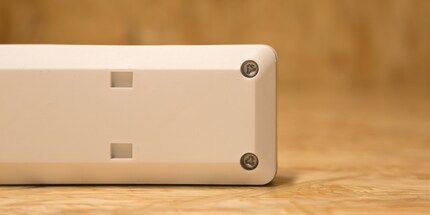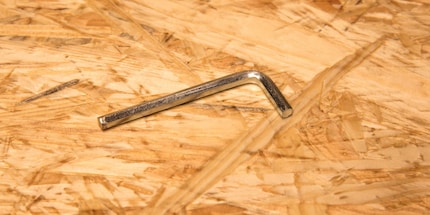
Guide
Home Improvement: part 2
by Carolin Teufelberger

Slotted, Phillips, Torx: We are used to encountering very different screw heads. But why is that actually the case?
Lately, our colleague Kevin Hofer from digitec took a power strip from Brennenstuhl to task. Apparently, the child safety lock is almost insurmountable even for adults. But what interested me more than the sockets were the screws.
They are emblazoned on the back of the socket strip like a three-pronged ninja star. Neither Kevin nor I know the name of this mysterious screw. So down to the professionals in our Category Management. They help us: the type of screw is called Microstix.

But that's not the end of the topic for me. One question comes to mind: Why are there so many different screws? Slotted, Phillips, Torx, Allen and whatever they're all called. I need a separate screwdriver for almost all of them. Why can't they be the same? Probably because the screw mafia can't afford their extravagant lifestyle otherwise. Okay, that's probably not the reason. And I've never heard of a screw mafia either. But it must be about money, right? I'll get to the bottom of the truth.
First of all, I look at lists of screw head drives. Around 125 different shapes are said to be represented. That massively exceeds the number in my imagination. Why do you need 125 different ways to screw an elongated metal part into a base? I doubt that anyone can plausibly explain this to me. But I'll take my chances.
I go to the place where I often find answers to the important questions in life: reddit. And lo and behold, I'm not the first with this question. One of my favourite subreddits (topic pages) "Explain me like I'm five" brings me a whole lot closer to the truth.
It's all about cost, torque and different tasks. The slotted screw is simple to use and easy and cheap to manufacture. You can even get a screw like this in without the right screwdriver. However, it can hardly withstand anything and warps quickly. The Phillips head, on the other hand, centres the screwdriver automatically, which means it stays in place. However, they do not allow much torque either, as they disengage under too much torque, which should prevent over-tightening. Torx profiles hardly disengage at all, as the torque is applied in the centre and on the sides of the head. Hexagon socket screws also allow a lot of torque, but can be overtightened. What's more, they don't require a proper screwdriver, but an Allen key, which is very cheap to produce. That's why you'll often find this type of screw on furniture from Ikea.

The list could go on and on. Every screw has properties that are sometimes better and sometimes worse suited to certain tasks. What's more, due to the many automated processes and new designs, today's industry has different requirements than private consumers, which is why new optimised screws are constantly coming onto the market. However, the fact that there are 125 different screws is partly due to the phenomenon of standardisation. Instead of finding a standard, new types are constantly being found in the process.

My life in a nutshell? On a quest to broaden my horizon. I love discovering and learning new skills and I see a chance to experience something new in everything – be it travelling, reading, cooking, movies or DIY.